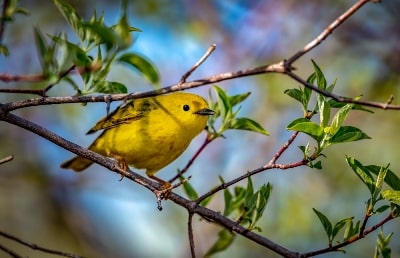The Wild Side of Florida: Exploring the State’s Wildlife and Conservation Efforts

Florida, also known as the Sunshine State, is home to a wide variety of wildlife and natural wonders. From the Everglades to the Gulf Coast, Florida’s diverse ecosystems support an abundance of wildlife, including manatees, alligators, panthers, and a plethora of bird species. However, these natural treasures are not only valuable for their beauty and biodiversity, but they also contribute to the state’s economy through tourism and recreation. Therefore, it is crucial to maintain and protect these ecosystems, and Florida has been taking significant steps to ensure their conservation efforts.
In this article, we will take a closer look at Florida’s unique wildlife and the conservation efforts that have been implemented to preserve them.
Florida’s Wildlife
Florida’s wildlife is incredibly diverse and includes both native and invasive species. The state is home to a variety of mammals, including the Florida panther, which is one of the most endangered species in the United States. The Florida panther is a subspecies of the cougar and is found exclusively in southern Florida. Other mammal species found in Florida include the manatee, which is a marine mammal that is often found in the state’s coastal waters and springs. The American alligator is another iconic animal found in Florida, primarily in the Everglades, and is often seen sunbathing along the riverbanks. Other mammals found in Florida include the black bear, deer, fox, and raccoon.
Florida is also home to a vast variety of bird species, making it a popular destination for birdwatchers. The state is known for its wading birds, including the great blue heron, egret, and spoonbill, which are often seen fishing in the shallow waters of the wetlands. Other bird species found in Florida include the bald eagle, osprey, and a variety of songbirds.
Florida’s marine life is equally impressive, with an abundance of fish, sharks, dolphins, and sea turtles. Florida is known for its coral reefs, which are home to a variety of colorful fish and other marine life. The state’s waters are also home to several species of sea turtles, including the loggerhead, green, and leatherback turtles.
Conservation Efforts
The state of Florida has implemented several conservation efforts to protect its natural resources and wildlife. One of the most significant conservation efforts is the Comprehensive Everglades Restoration Plan (CERP), which was established in 2000. The CERP aims to restore the natural water flow in the Everglades and improve the quality of the water that flows into the ecosystem. The Everglades is a vast wetland system that is essential for Florida’s ecology, and the CERP is an essential step towards preserving this natural wonder.
In addition to the CERP, Florida has also implemented several other conservation efforts to protect its wildlife and natural resources. For example, the state has established a network of state and national parks, including the Everglades National Park and the Biscayne National Park. These parks provide essential habitats for wildlife and allow visitors to experience Florida’s natural beauty while also promoting tourism and economic growth.
The Florida Fish and Wildlife Conservation Commission (FWC) is another crucial agency responsible for managing and protecting Florida’s fish and wildlife resources. The FWC works to conserve and manage fish and wildlife populations, maintain healthy habitats, and promote outdoor recreation. The FWC also plays a crucial role in regulating hunting and fishing in the state, ensuring that these activities are conducted sustainably and do not harm wildlife populations.
Florida’s conservation efforts also extend to marine life. The state has implemented several measures to protect its coral reefs, which are threatened by climate change, pollution, and overfishing. The Florida Coral Reef Conservation Program (FCRCP) is a partnership between state and federal agencies, non-profit organizations, and academic institutions that works to protect and restore Florida’s coral reefs. The FCRCP focuses on reducing pollution, improving water quality, and promoting sustainable fishing practices to protect these essential habitats for marine life.
Challenges and Opportunities
Despite these conservation efforts, Florida’s wildlife and natural resources face several challenges. Climate change, habitat loss, and pollution are significant threats to Florida’s ecosystems and wildlife. Rising sea levels and more frequent and severe storms are also increasing the risk of flooding and erosion, which can have devastating impacts on Florida’s coastal communities and ecosystems.
Invasive species are also a significant threat to Florida’s biodiversity. Non-native species, such as the Burmese python and the lionfish, have become established in Florida and are causing significant harm to native wildlife populations. The state is working to control these invasive species, but their impact remains a significant challenge.
However, these challenges also present opportunities for Florida to continue its leadership in conservation and sustainability. The state can continue to invest in renewable energy and sustainable development, promote ecotourism and outdoor recreation, and work to reduce pollution and protect its natural resources.
Florida’s wildlife and natural resources are some of the state’s most valuable assets, both in terms of their intrinsic value and their contribution to the state’s economy and quality of life. Protecting and preserving these resources is crucial for the health and well-being of Florida’s residents and visitors, as well as for the state’s economic and environmental sustainability.
Florida’s conservation efforts have made significant progress in recent years, but more work remains to be done. As the state faces new challenges from climate change, habitat loss, and invasive species, it must continue to invest in conservation and sustainability to protect its wildlife and natural resources for future generations. By working together, Florida’s residents, visitors, and policymakers can ensure that the Sunshine State remains a wild and beautiful place for generations to come.

Heather is the lead content creator at FloridaFabulous.com She also writes in the pool and outdoor space. At FloridaFabulous.com Heather specializes in Florida based travel and tips articles.